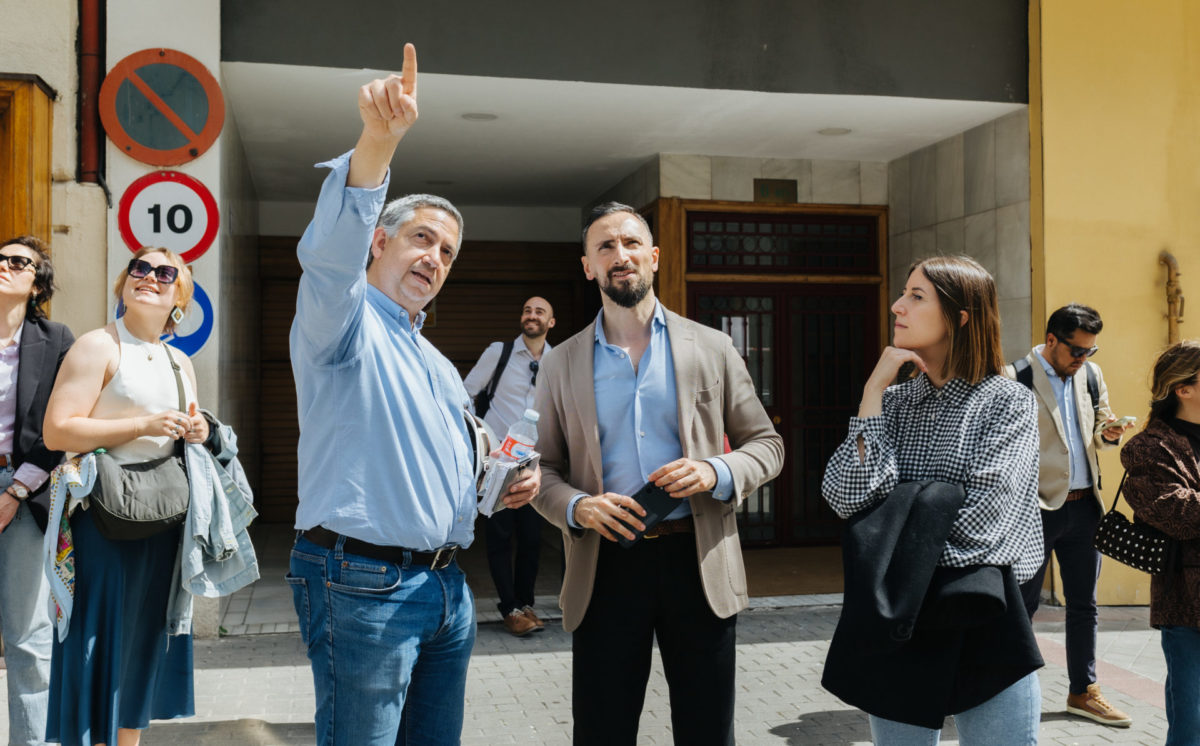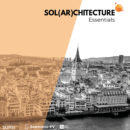6 May 2025
The course was developed by SUPSI (University of Applied Sciences and Arts of Southern Switzerland) within the European project SEAMLESS PV and in collaboration with TECNALIA Research & Innovation, ETSAM (Escuela Técnica Superior de Arquitectura de Madrid), Onyx Solar Energy, CIEMAT, Becquerel Institute, ENAR Envolventes Arquitectónicas and the SOLARCHITECTURE.ch team. Source: SUPSI.
The Solarchitecture – Essentials course, held in the vibrant city of Madrid, brought together 15 passionate professionals from across the architecture, glass and academic sectors. Over the course of three days, participants explored the principles and practices of solar-integrated building design through lectures, real-world case studies, and a hands-on workshop. The program was designed to provide both foundational knowledge and practical experience, guiding attendees through the process of designing with solar technologies from concept to construction.
The course began with an in-depth theoretical session hosted at UPM. Participants engaged with leading experts in solar design who introduced the fundamentals and emerging challenges of building-integrated photovoltaics (BIPV). Interactive lectures were complemented by classroom exercises that allowed attendees to immediately apply key concepts. The day was structured around a series of expert-led sessions and thematic presentations:
- Pierluigi Bonomo (SUPSI) opened with “Photovoltaics: from function to beauty”, offering an inspiring perspective on the aesthetic potential of solar design.
- Greta Battaglia (SUPSI) followed with “Sun as a building material”, showcasing realworld case studies of solar architecture.
After a short break, the focus shifted to technological fundamentals:
- Estefania Martin (UPM) explored the principles of solar resources, solar cell technologies, and essentials of BIPV design.
- Alberto Follo (SUPSI, online) introduced solar simulation and BIM-based modeling workflows.
- José M. Vega de Seoane (Becquerel Institute) analysed market drivers and business strategies to foster the solar building transition in Spain.
- Participants then joined a guided tour led by Lorenzo Olivieri (UPM) of the BIPV experimental showroom, developed under the RINGS-BIPV project.
- Daniel Valencia (Tecnalia) presented cutting-edge BIPV product innovations from the SEAMLESS-PV project, emphasising market readiness.
- Laurent Quittre (Active Glass) posed a provocative question in his session on business models: “Is there a value of beauty?”, sharing insights from two decades in solar architecture.
In the final segment, the focus turned to performance, standards and economics:
- Nuria Martin Chivelet (CIEMAT) addressed the thermal, optical, and electrical behaviour of BIPV systems.
- Fabio Parolini (SUPSI, online) provided key insights on quality standards and certifications.
- Paolo Corti (SUPSI, online) closed with an overview of cost-effectiveness and life-cycle competitiveness in solar building investments.
The second day, following a short morning session led by representatives from ENAR and Onyx Solar, participants visited two innovative BIPV buildings (Castellana 66 and ACCIONA Campus). These tours provided a direct look at the application of solar architecture principles in completed projects. Attendees had the opportunity to speak with the
design and construction teams, deepening their understanding of materials, systems and implementation strategies.
Participants also took part in a hands-on activity led by SUPSI designed to analyse a real BIPV project in small teams, where evaluate the project across four key areas:
- Architectural integration
- Technical performance
- Financial viability
- Sustainability impact
This dynamic activity allowed attendees to consolidate their knowledge and apply it to real-world problem-solving, fostering collaboration and critical thinking.
The final day took place in Ávila, beginning with a deep-dive into the Catholic University of Ávila’s solar project as a case study. The group then visited Onyx Solar’s production
facility, where they explored the full manufacturing process of photovoltaic glass. Ángel Gallego presented the Catholic University of Ávila (UCAV) project, outlining its concept, design, site context, and its significance within the BIPV framework. Particular focus was given to the seamless integration of PV elements, material selection and benchmarking, and the challenges faced during construction.
Mauricio Valdivia and Ismael Antoñanzas introduced the INCREASE project, which explores innovative applications of photovoltaic technology in urban furniture. The session highlighted how PV can transcend traditional building surfaces and become part of the urban landscape.
Guided by Ángel Gallego, participants also visited the UCAV site to observe firsthand how solar technologies were implemented within the building, reinforcing the theoretical knowledge from the morning sessions.
The day continued with an in-depth tour of the Onyx Solar production facility, where participants experienced the entire photovoltaic glass manufacturing process. The group was divided into two groups, allowing for an interactive and detailed walkthrough of:
- Product development
- Advanced manufacturing techniques
- Quality control and innovation pipelines
Guides included Ángel Gallego, Ismael Antoñanzas, María Jiménez, and Araceli Sánchez, who provided technical insight and answered questions throughout the visit.
This final immersive day brought participants into direct contact with BIPV production, bridging the gap between design concepts and real-world manufacturing and concluding the course with a rich understanding of the full BIPV value chain.



